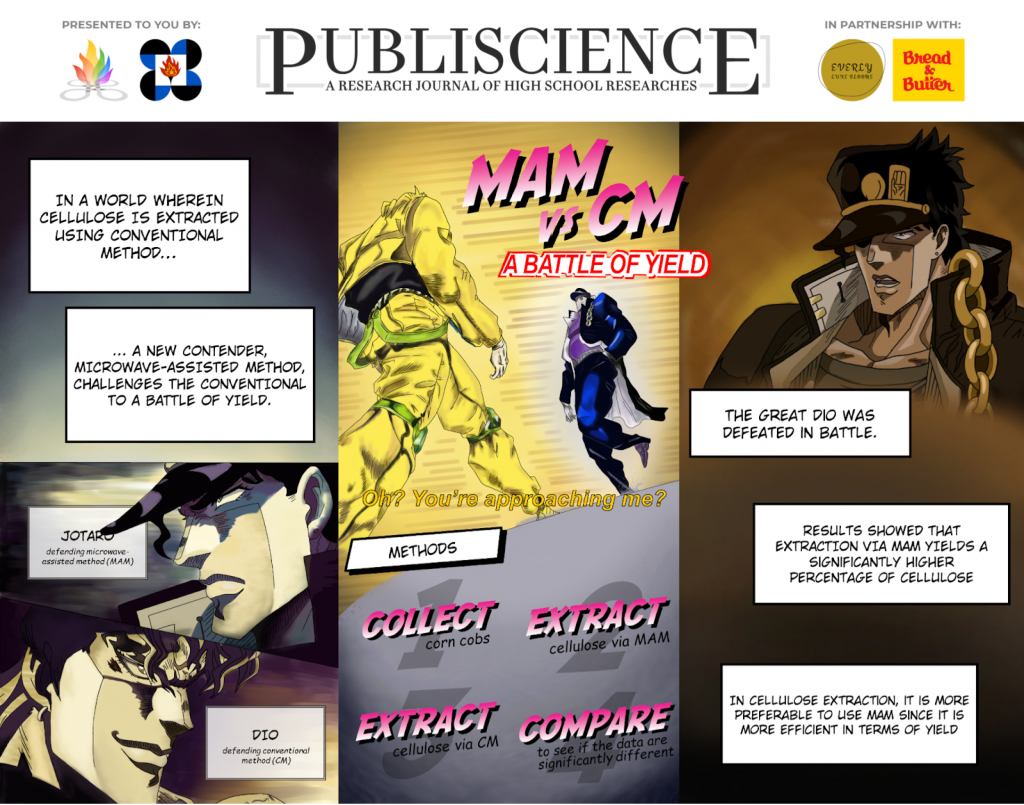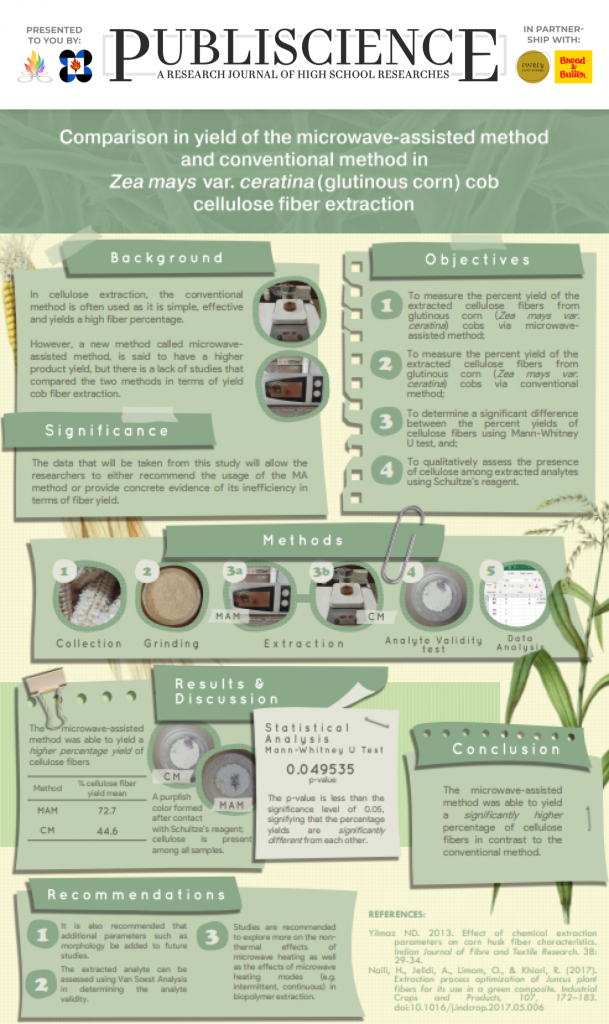Comparison in yield of the microwave-assisted method and conventional method in Zea mays var. ceratina (glutinous corn) cobs cellulose fiber extraction
CAROLYN GRACE C. SACATE, HENDRIK LORENZ B. ALABATA, JASON SANTINO T. ADVINCULA, and XAVIER ROMY O. BRAÑA
Philippine Science High School Western Visayas Campus – Department of Science and Technology (DOST-PSHSWVC), Brgy. Bito-on, Jaro, Iloilo City 5000, Philippines
Abstract
Cellulose is a biopolymer that is abundant in nature, often extracted from raw materials via the conventional method. However, a new method of fiber extraction called the microwave-assisted method is said to be cost and energy-efficient. In this study, cellulose fibers were extracted from Zea mays var. ceratina cobs via microwave-assisted method (MAM) and conventional method (CM), wherein the yield means of the two methods were determined and statistically compared. Z. mays cob powder was subjected to 8% (w/v) NaOH for the alkalization process, 5% (w/w) H2O2 for the acid hydrolysis, and heated using a microwave oven and hot plate for MAM and CM, respectively. The results showed that the MAM and CM yielded 72.7% and 44.6% cellulose fibers, respectively. Statistical analysis via Mann-Whitney U test showed that there is an observed trend towards MAM yielding a higher percentage of crude cellulose in contrast to CM.
Keywords: microwave-assisted, extraction, cellulose, yield, Zea mays var. ceratina


